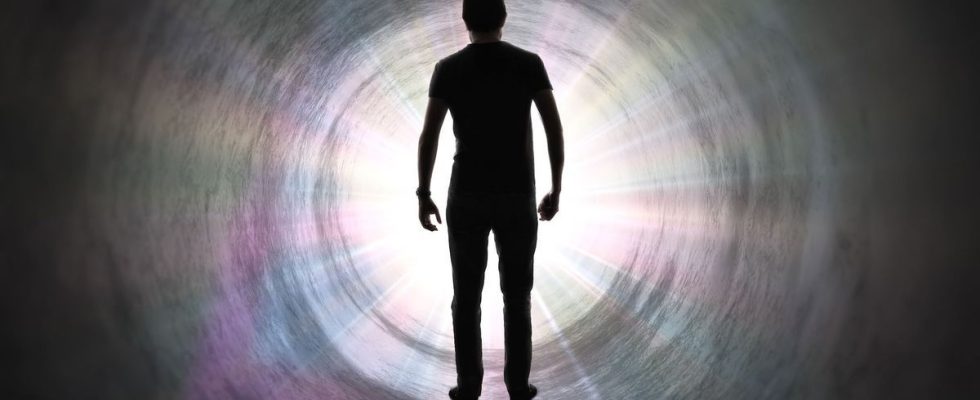Published on
Updated
Reading 2 mins.
According to researchers, some patients in cardiac arrest would present a “high brain activity” just before dying. Update on this discovery with Dr. Jean-Pierre Jourdan, president of the International Association for Near-Death Studies (IANDS) and specialist in near-death experiences.
The light at the end of the tunnel, the life that passes before his eyes… The testimonies of patients who have had a near-death experience are similar. However, the mechanism behind it still remains unclear. To try to see more clearly, researchers from the University of Michigan conducted the investigation. Their results are published in the journal Proceedings of the National Academy of Science.
Increased heart rate and spike in gamma waves
In this study, scientists studied the records of four comatose patients who died of cardiac arrest while being monitored by an electroencephalogram (EEG).
Upon removal of their respiratory support, two patients (a 24-year-old woman and a 77-year-old woman) experienced an increase in heart rate. A peak of gamma waves in the brain was also recorded.
For researchers, there is no doubt: “If this part of the brain is stimulated, it means the patient is seeing something, can hear something, and can potentially feel sensations outside of their body.“, says its main author, Jimo Borjigin, before adding that this area was “in fire“.
If scientists cannot explain these reactions, they know a little more about the brain area concerned.
“The activity was detected in the area known as the “neural correlates of consciousness”, ie the junction between the temporal, parietal and occipital lobes at the back of the brain. This area has been correlated with dreams, visual hallucinations in epilepsy, and altered states of consciousness in other brain studies“, say the authors in a communicated.
On the other hand, the two other deceased patients did not present the same signs (increased heart rate or brain activity) at the time of their death. According to Jimo Borjigin, their “history of seizurescould explain this difference.
Nevertheless, in view of the few patients observed during the study, no correlation between the neural signatures of consciousness and the near-death experience can be made… even if “the results observed are definitely exciting“, conclude the researchers.
The lack of oxygen in the brain would justify the signs observed
For his part, Dr. Jourdan affirms that these results have “nothing new“.
“When the brain is dying and lacks oxygen, it is the seat of many disturbances. Many reactions can then take place, such as an accelerating heart rate or brain damage that disinhibits the visual cortex. However, linking these reactions to the approach of death is completely obsolete. The studies I have carried out on this subject prove it: what happens in the brain is independent of the experience itself..
